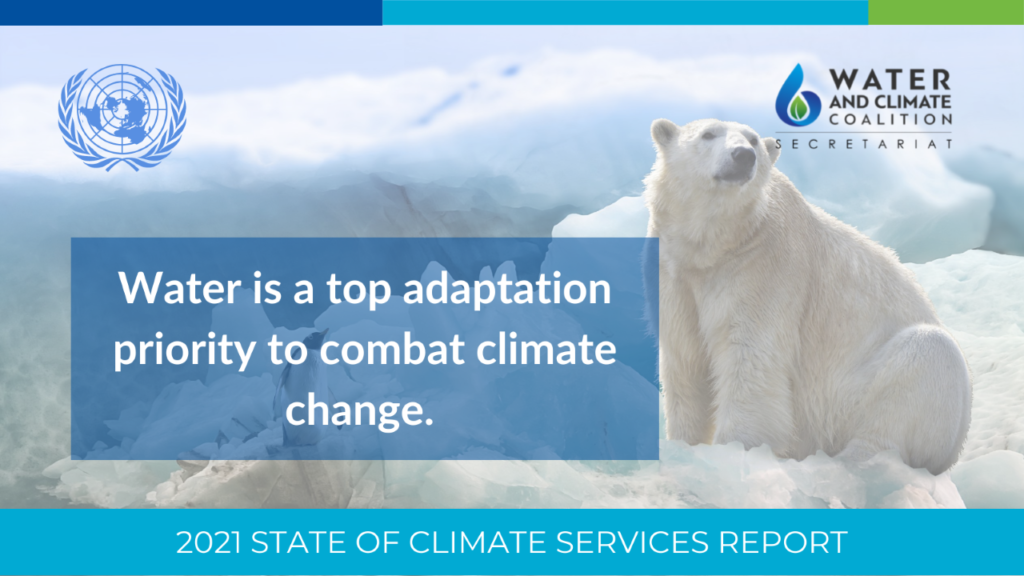Water and Climate Coalition (WCC) leaders at the United Nations Climate Change Conference (COP26) in Glasgow, UK, have issued an urgent call for integrated water and climate action to replace the existing fragmented and crisis-driven approach.
The WCC is designed to address one of WMO’s top priorities – monitoring and predicting changes in weather, climate and water – through the exchange of information, services and research, and through cooperation between national meteorological and hydrological agencies. The multi-stakeholder coalition is therefore lobbying for an integrated and global Water and Climate Agenda to support more effective adaptation and resilience and speed up progress toward Sustainable Development Goals 6 (water and sanitation) and 13 (climate). However, according to the data, the world is seriously off track to meet both targets.
The conference’s weather measurement data has found that climate change is exacerbating both water scarcity and water-related hazards, as rising temperatures disrupt precipitation patterns and the entire water cycle. Currently, 3.6 billion people face inadequate access to water at least one month per year and this is expected to increase to more than 5 billion by 2050.
Furthermore, only 0.5% of water on Earth is useable and available as freshwater. However, in the past 20 years, terrestrial water storage – all water on the land surface and in the subsurface, including soil moisture, snow and ice – has dropped at a rate of 1cm per year. This is predicted to have huge ramifications for future water security, given population increase and environmental degradation.
For high-mountain regions like central Asia, the Himalayas and the Andes, glacier melt increases the risk of water-related hazards such as landslides and avalanches. In the longer-term it means a water security crisis for many millions of people and vast ecosystems. Given the serious potential consequences, Tajikistan has proposed proclaiming 2025 as the International Year for Glacier Preservation and creating an associated fund.
Emomali Rahmon, president of Tajikistan, said, “Our glaciers are melting rapidly and to date more than 1,000 of Tajikistan’s 14,000 glaciers have completely melted. Over the past few decades, the total volume of glaciers in our country, which make up more than 60% of the water resources in the Central Asian region, has decreased by almost a third.”
With its special focus on information, monitoring systems, data and operational capacity, the WCC is open for a wide range of members from scientific organizations, the private sector, NGOs, UN organizations, governments and the civil society to generate momentum. The Water and Climate Leaders group currently includes presidents János Áder of Hungary and Rahmon, as well as the past president of the Republic of the Marshall Islands, past prime ministers of the Republic of Togo and of the Republic of Korea, as well as high-level representatives of UN entities, civil society, the private sector and two youth envoys.
Petteri Taalas, secretary-general, WMO, joined the heads of nine other international agencies in issuing an urgent call for action. “Increasing temperatures are resulting in global and regional precipitation changes, leading to shifts in rainfall patterns and agricultural seasons, with a major impact on food security and human health and well-being,” he said. “This past year has seen a continuation of extreme, water-related events, which have killed hundreds, displaced thousands and affected millions.”
At the conference, Mari Pangestu, World Bank managing director of development policy and partnerships, said, “In the fight against climate change, water is the great connector. We need exceptional and urgent collective global action to tackle the combined impact of cascading crises that have hit the poor and vulnerable hardest. Today, the World Bank is focusing on delivery more than ever before. Global water management must transform as part of overall efforts to achieve green, resilient and inclusive development.”
Lindsey Blodgétt, World Youth Parliaments for Water, said, “Nearly 40% of the world’s population is considered as youth. At any conference proceeding, political dialog, and decision to be made around our most precious asset, the voice of youth matters. It is therefore of vital importance to ensure that the input and voices of youth are well accounted for.”
Barbara Visser, Minister of Infrastructure and Water Management for the Kingdom of the Netherlands, said, “Climate change is happening now and is jeopardizing peace, security, biodiversity and global sustainable development. Water is key to achieving real change and to reaching the goals of the 2030 Agenda. Let’s scale up and accelerate action in the field of governance, financing, data and information, capacity building and innovation to turn the tide and to secure a sustainable future, leaving no one behind.”
Matthias Berninger, senior vice president of Public Affairs and Sustainability at Bayer, said, “To tackle the water crisis at a global level, there are three areas of action: first, we need commitment from the private sector. Second, we need overarching political action. Third, and most importantly, we need wide-ranging cooperation. We have a joint responsibility to make this work. If we fail, it is not just a failure for us, but also for future generations.”



